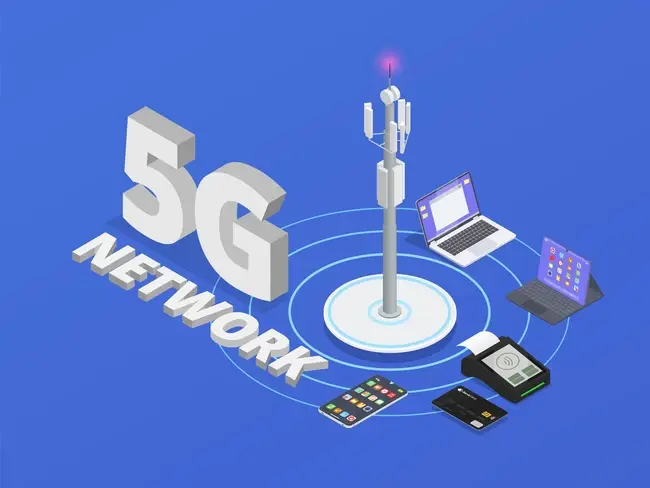In an era of unprecedented connectivity, 5G technology stands as a beacon of progress, promising faster speeds and revolutionary possibilities; however, as we embrace this new wave of innovation, it's crucial to address the accompanying cybersecurity challenges. This article delves into the relationship between 5G networks and the security hurdles they present, highlighting the need for vigilance in the face of evolving digital landscapes.

Key Features of 5G Networks
5G comes with quite a new level of speed where the data is sent and received at unmatched speeds. Fast download and upload speeds will update content in quick time, seamless streaming, and swift data transfer. The unrivaled unmatched speed translates to making the digital experience smoother hence overwhelmingly responsive.
One of the interesting functionalities of 5G is very low latency time. Essentially, latency is the time taken between sending and obtaining information. For 5G, it is reduced to near instantaneously. Low latency is crucial to ensure that real-time interactive applications can send available information immediately in applications such as online games, video conferencing, and autonomous vehicles where immediate response is necessary.
In the era of the Internet of Things (IoT), 5G takes a giant leap forward in supporting massive device connectivity. In this case, it implies that more devices can be connected to the network and the performance of the same is in no way compromised. From smart homes to wearable devices and industrial sensors the 5G provides a seamlessly connected ecosystem that will foster the growth of innovative applications and services.
Cybersecurity Concerns in 5G Networks
With the expanded connectivity 5G brings, the attack surface also widens. More devices connected means more potential entry points for cyber threats. As we delve into the hyper-connected world of 5G, securing these numerous access points becomes crucial to thwart malicious activities.
If 5G is expected to deliver lightning-fast speed and seamless connectivity, it is also to usher vulnerabilities in architecture. The complex web of hardware, software, and communication protocols leaves potential weak links that may be exploited by cyber attackers. A highly resilient infrastructure of 5G.
As data are the lifebloods of a digital age and with threats to data integrity and confidentiality set to grow, one must take into consideration. With 5G enabling instant large-scale data transfers, there is a greater threat of unauthorized access and data breaches. The security of sensitive information from unwanted prying eyes, and the viability of your data - are going to be the most critical issues for organizations in a 5G environment.
Specific Cybersecurity Challenges
The 5G network's broader acceptance of edge computing power presents new security challenges. The decentralization nature of the edge will introduce potential vulnerabilities hence the need to fortify the perimeters against unauthorized access. Keen monitoring and robust encryption are key in making sure that data processed at the edge is secured.
The collection of Internet of Things (IoT) devices amplifies the cybersecurity threat landscape. From smart home gadgets to sensors within industrial units, every other device would act as a potential entry point for malicious actors. Safeguarding IoT security entails putting strict measures on authentication, updating the software regularly, and making the users aware of the best practices of security.
Supply chain risks are associated with the 5G infrastructure as it has an intricate network of suppliers and vendors. From the hardware components to the software integrations, any compromise within the supply chain cascades effects throughout the entire network. Reducing these risks calls not only for rigorous checking up of suppliers but also monitoring for vulnerabilities and engendering a culture within the supply chain ecosystem that is of transparency and accountability.
Strategies for Securing 5G Networks
Security requires a united front for it to be effective. Sharing insights, threat intelligence, and best practices amongst industry stakeholders as well as government bodies creates comprehensive frameworks that defuse evolving threats against 5G networks. It bolsters collective defense against cyber threats.
Data stands as the lifeblood of connectivity in an ecosystem-based around 5G. Strong encryption protocol acts like a protective shell that keeps sensitive data tamper-proof and away from access to any unauthorized persons. The use of strong encryption mechanisms results in not only user data remaining well-protected but also upholding the overall integrity of any 5G infrastructure.
Such dynamic threats necessitate a proactive security approach. This, therefore, implies a regular assessment in terms of auditing and updating to ensure the timely application of patches whenever vulnerabilities are discovered. By so doing, the 5G networks will remain with a continuous monitoring mechanism that will always have them ahead with the best possible defense against emerging cyber threats.
Regulatory Landscape and Standards
International cooperation is key to the creation of a secure 5G environment. Organizations such as the International Telecommunication Union (ITU) and 3rd Generation Partnership Project (3GPP) emanated globally accepted standards that are very instrumental in guiding a system for ensuring the security of 5G networks. The standards are for the encryption protocols, authentication methods, and network resilience.
Globally, governments as well as regulatory bodies are increasingly devising efforts to combat 5G cybersecurity challenges. Measures are being taken concerning the development of 5G security-specific regulatory frameworks as well as enhancing collaboration between public and private sectors. Such rules sometimes delineate the obligations of service providers, equipment vendors, and other stakeholders in upholding the integrity and confidentiality of 5G networks.
Compliance requirements are also stringent for 5G service providers. It is a must to comply with standards and regulatory regimes that have been stipulated. Compliance means implementing the measures of security to guard against any possible threats, performing regular audits and proving the commitment to proactive risk management. Failing to comply with these requirements may lead to some serious consequences aimed at damaging the image or imposing certain legal penalties.
Final Thoughts
The integration of 5G networks marks a significant leap forward in connectivity, yet it comes with its set of cybersecurity challenges; safeguarding against increased attack surfaces, addressing vulnerabilities, and fortifying against emerging threats are crucial steps. As we navigate this dynamic landscape, collaborative efforts, innovative solutions, and ongoing vigilance will be key to realizing the full potential of 5G while ensuring a secure and resilient digital future.







Comments ( 0 )